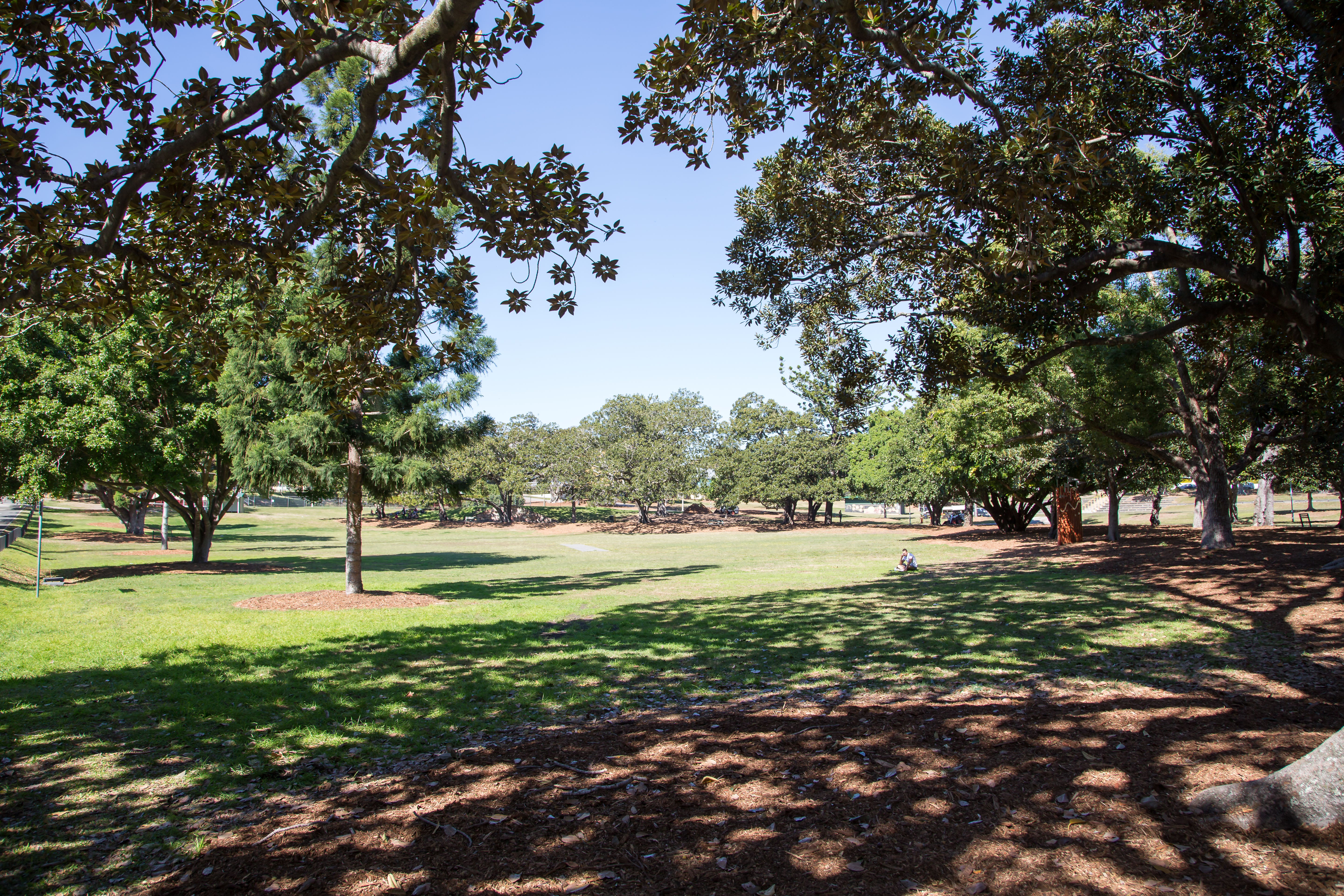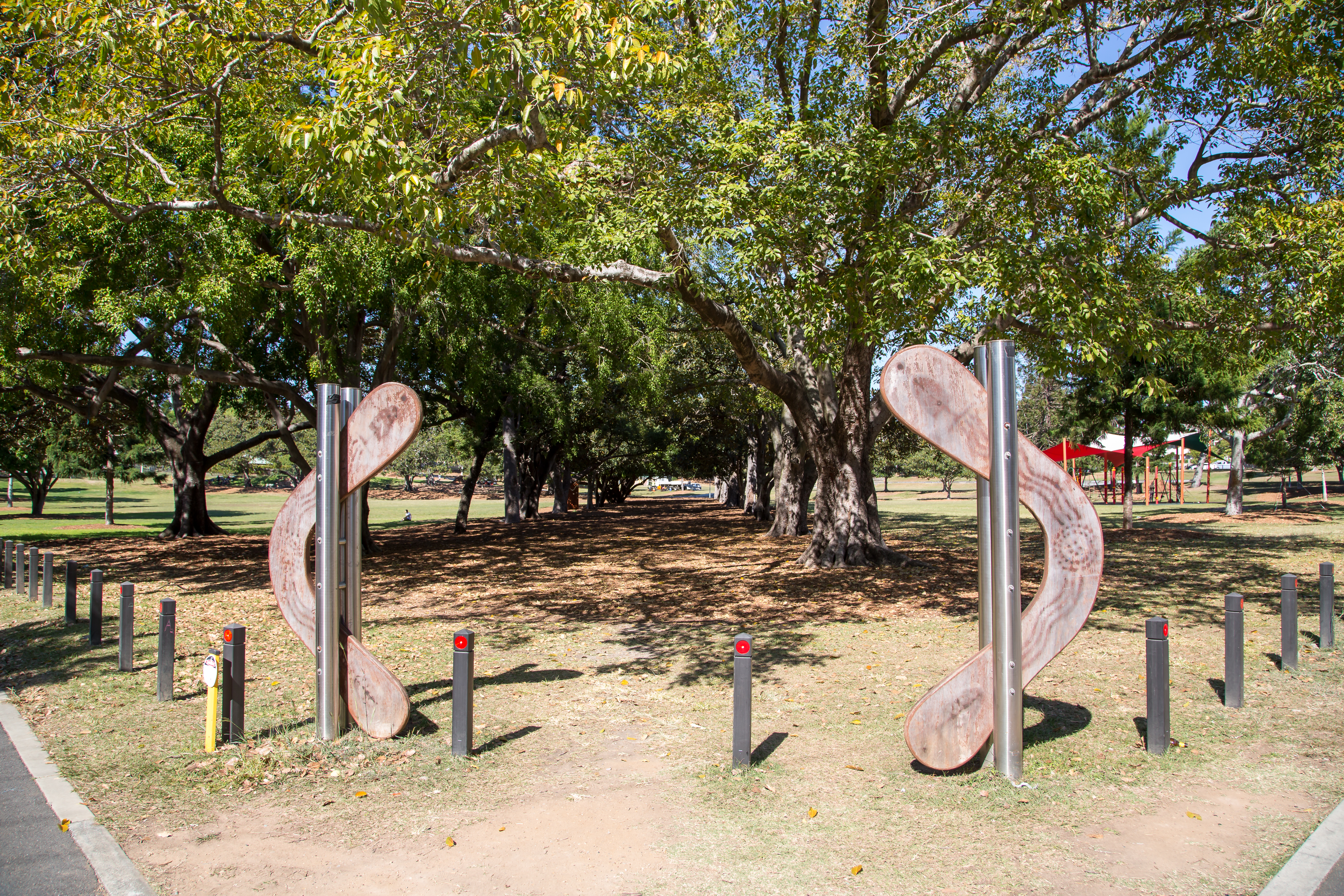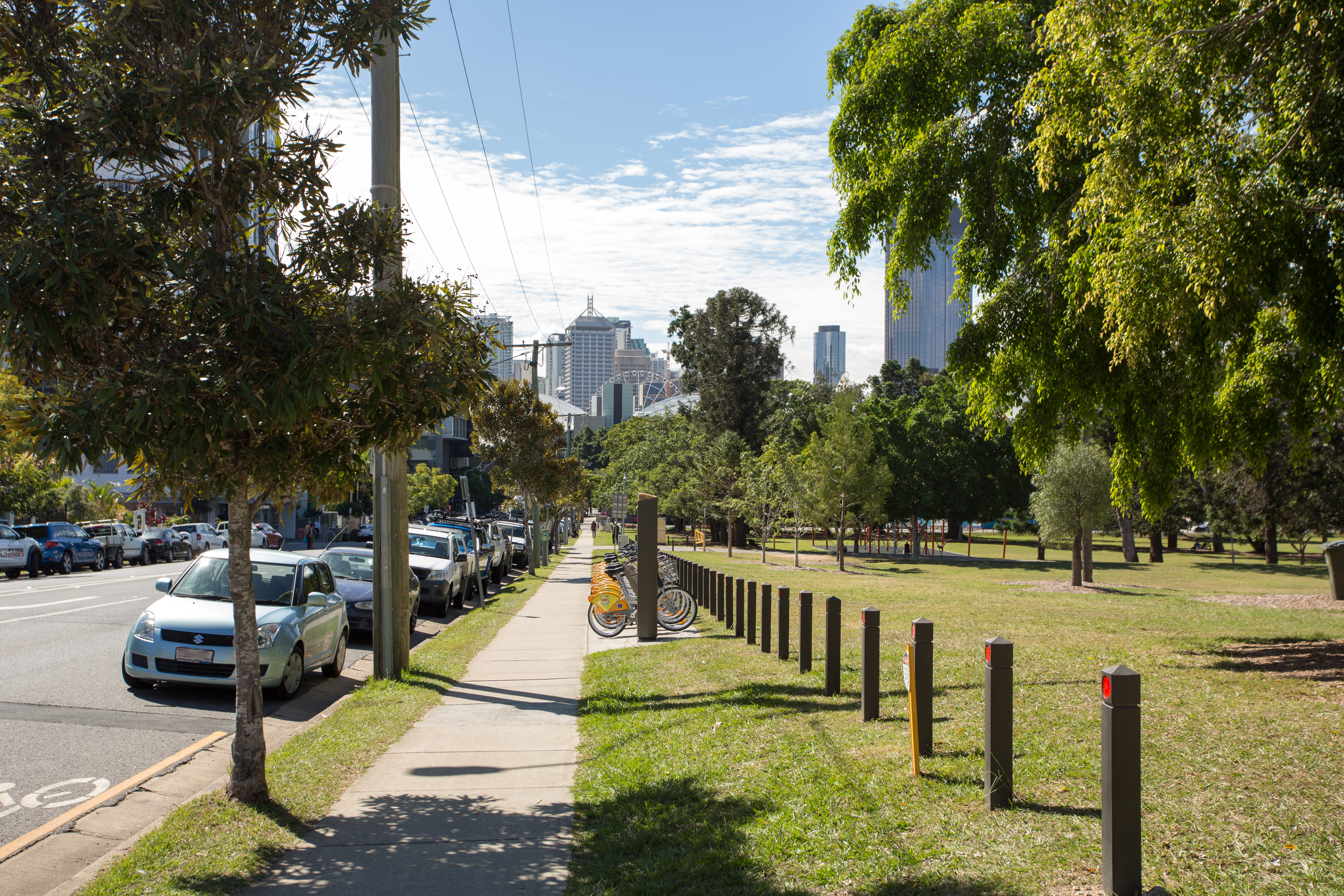Addresses
Type of place
Club house, Park
Period
Federation 1890-1914
Style
Queenslander
Addresses
Type of place
Club house, Park
Period
Federation 1890-1914
Style
Queenslander
Gazetted in 1865, Musgrave Park is one of the oldest public parks in Brisbane. By the turn of the century it was host to a number of recreation pursuits including tennis, cricket, croquet, bowls, and football, and also featured a bandstand. In later years it was the scene of Aboriginal protest and host to an Aboriginal Community Arts establishment. The South Brisbane Bowls Club was established in 1901 and a club building was raised soon afterward. The building was continually extended over the following decades, arriving at its present configuration in 1939. The club was patronised by many of Brisbane's leading citizens and, along with Musgrave Park itself, was a locus for middle class leisure activities in South Brisbane. The Club ceased operating in 1987, but the building has been adaptively re-used, now serving as an Aboriginal Community Centre.
Lot plan
L1_SP110538
Key dates
Local Heritage Place Since —
Date of Citation —
Construction
Roof: Corrugated iron;Walls: Timber
People/associations
South Brisbane Bowls Club (Association)Criterion for listing
(A) Historical; (A) Historical; (A) Historical; (B) Rarity; (E) Aesthetic; (E) Aesthetic; (G) Social; (G) Social; (G) Social; (G) Social; (G) SocialInteractive mapping
Lot plan
L1_SP110538
Key dates
Local Heritage Place Since —
Date of Citation —
Construction
Roof: Corrugated iron;Walls: Timber
People/associations
South Brisbane Bowls Club (Association)Criterion for listing
(A) Historical; (A) Historical; (A) Historical; (B) Rarity; (E) Aesthetic; (E) Aesthetic; (G) Social; (G) Social; (G) Social; (G) Social; (G) SocialInteractive mapping
History
According to traditional history the indigenous peoples of the region used this area as a neutral gathering space – a place of reconciliation and talking. With the closure of the Moreton Bay Penal Colony land on both sides of the river was surveyed and sold with little consideration for the indigenous inhabitants or public open space.
When Queensland became a separate colony in 1859, more thought was given to planning for the future and a large parcel of land in South Brisbane was set aside for public recreation. In 1865 the colonial government declared a smaller area of this land as the South Brisbane Recreation Reserve - which was named after the Governor of Queensland, Sir Anthony Musgrave K.C.M.G. in 1884. In the late nineteenth century the reserve remained vacant land and the subject of disputes over ownership and responsibility. Reduced by excisions for other purposes, the reserve stabilised to an area of approximately 9.3 hectares bounded by Russell, Cordelia, Vulture and Edmondstone Streets. State legislation passed in 1897 to protect the Aboriginal population resulted in their forced removal to reserves distant from the now bustling townships of Brisbane and South Brisbane.
Coinciding with the growing prosperity of South Brisbane the park became the venue for formal recreational and horticultural pursuits. Organised sports in the reserve included tennis, croquet, bowls and football. A bandstand was erected in 1901. The park developed more formal plantings over time with rock gardens and avenues of trees laid out to resemble the St Andrews Cross. Although the bandstand has now been removed, the building developed by the South Brisbane Bowls Club remains.
The Bowls Club was formed in 1901 to cater for the local interest in the sport. Prominent local gentlemen, including A.J. Thynne, M.L.C., Presbyterian Minister Rev. D.F. Mitchell and Phillip Nott, local alderman and former mayor of South Brisbane, became trustees of the club and were given a 21-year lease over about half a hectare of Musgrave Park. Work commenced on preparing the greens and the club was officially opened on 20 December 1902. By 1905 a small clubhouse had been erected. A new bowls house to the right of the original building was constructed in 1907 with further improvements added in 1917. As the club expanded, more land was added to the lease and South Brisbane City Council became one of the club's trustees. In 1927 the three separate buildings of the club were linked and by 1939 a comprehensive scheme combined the buildings under the one roof with a central hall and new kitchen added. Although the Club continued to prosper for much of the twentieth century, changing demographics in the local area and changed recreational pursuits in the 1980s saw activity at the club decline. In 1987 the lease was relinquished and the clubhouse vacated.
During this time both the park and the local society had radically changed. From a predominantly northern European community in the first half of the twentieth century, the postwar era saw new Mediterranean immigrants settle in South Brisbane. Legislative changes allowed indigenous Australians to reconnect with their communities. During the 1960s part of the park was resumed for the expansion of Brisbane State High School and the establishment of a football field parallel to Edmondstone Street disrupted avenues associated with the St Andrews Cross. In 1967 the Musgrave Park Pool was opened by the Brisbane City Council and operates on a separate lot in the park.
Since the 1970s the park has been regularly used for many organised events. These range from small interest group gatherings to large city-wide community festivals. The annual Paniyiri Festival of the Greek community, which had modest beginnings in the 1970s is one such event. Musgrave Park has also been the venue for robust protests by both Aboriginal and non-Aboriginal Australians. The Commonwealth Games in 1982 and the Bicentenary of the landing of the First Fleet in 1988 triggered an outpouring of dissent over the treatment of indigenous people. The threat to the park posed by the nearby Expo '88 site and perceived gentrification of the local area triggered further public protests.
In response to submissions in 1988 the Brisbane City Council established the Jagera Community Arts Resource Centre in the former South Brisbane Bowls Club facilities and held the combined former bowling greens and tennis court land in trust for Aboriginal purposes. The former Richard Randall Art Studio was relocated from nearby (although this has recently been moved to Mt Coot-tha Botanic Gardens). Since the 1990s the park has hosted Aboriginal and Torres Strait Islander Observance Day, Labour Day and International Women’s Day events; Australia Day celebrations, market festivals and Fiestas, a marathon and Classic Motor Show. The National Union of Students, Lesbian and Gay groups, Reclaim the Night and the Jabiluka Action Group; Blessing the Animals Ceremony and a Seventh Day Adventist picnic have also gathered at the park. Musgrave Park remains a popular venue for formal and informal recreation and community gatherings.
Statement of significance
Relevant assessment criteria
This is a place of local heritage significance and meets one or more of the local heritage criteria under the Heritage planning scheme policy of the Brisbane City Plan 2014. It is significant because:
References
-
Brewer, F.J., & Dunn, R., The Municipal History of South Brisbane, (Brisbane: H. Pole & Co, 1925)
-
Brisbane City Council. Creative Communities, BCC Community Arts Publication, 1989
-
Brisbane City Council. Musgrave Park. Draft Management Plan. BCC City Design, Feb 2001
-
R. Kerkhove, “West End to Woolloongabba: The Early and Aboriginal History of a District”, unpublished paper, F.A.I.R.A., 1985
-
A.E. Lavis, W.G. West, Fifty Years of Bowling at South Brisbane: Jubilee 1901-1951, South Brisbane, South Brisbane Bowling Club, 1951
-
Lawson, Ronald 1973, Brisbane in the 1890s: A Study of an Australian Urban Society, University of Queensland Press, St. Lucia
-
The Brisbane Courier 25 October 1884, p.3. http://trove.nla.gov.au/ndp/del/article/3435454?searchTerm="Musgrave Park"&searchLimits=exactPhrase=Musgrave+Park|||anyWords|||notWords|||l-textSearchScope=*ignore*%7C*ignore*|||fromdd|||frommm|||fromyyyy=1850|||todd|||tomm|||toyyyy=1885|||l-title=16|||l-word=*ignore*%7C*ignore*|||sortby=dateAsc (Accessed 14/2/13)
Citation prepared by — Brisbane City Council (page revised June 2022)



